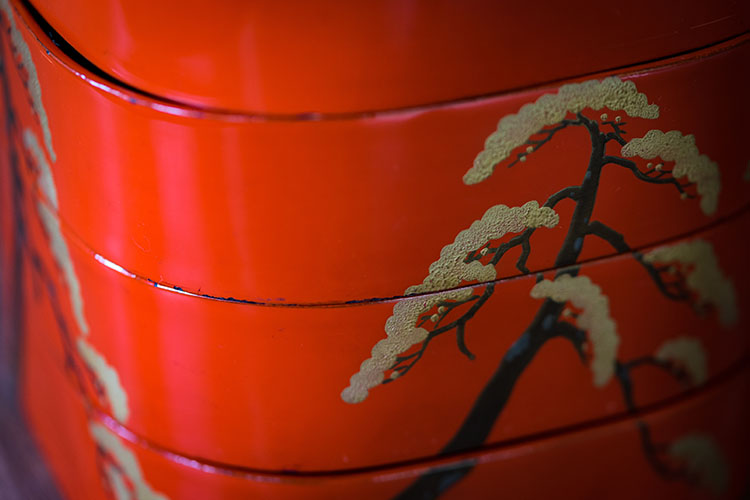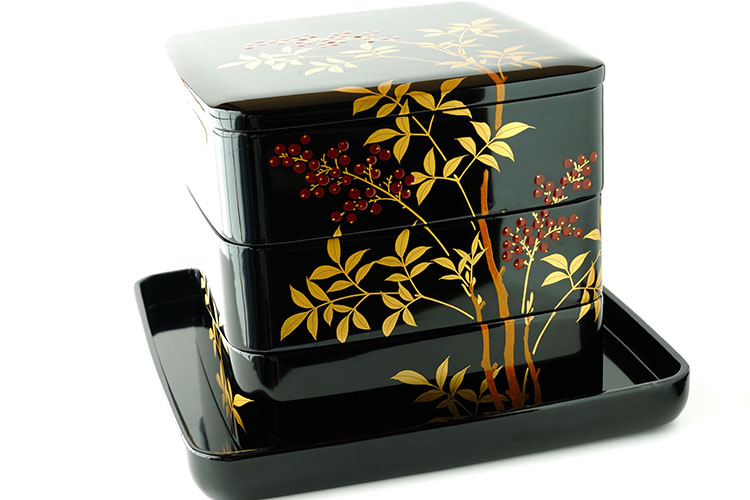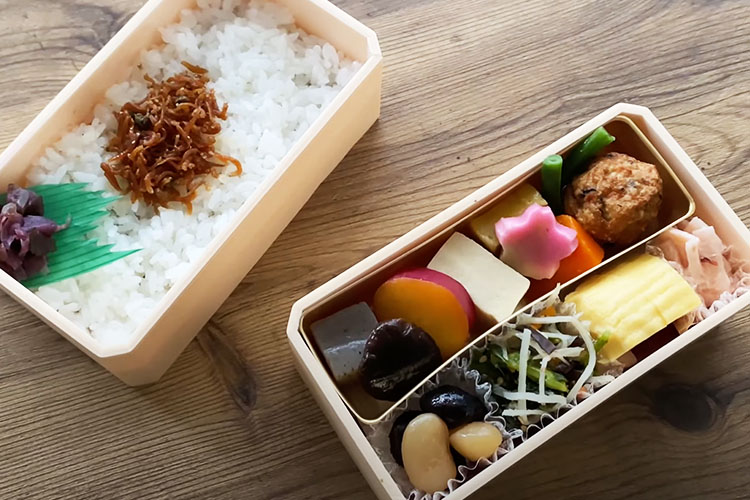When taking photos of a bought Bento, it’s challenging to naturally evoke the sizzle effect (like steam or smoke) that you would find in freshly made, warm dishes. However, by manipulating the reflection of light, arrangement, and angles, you can take pictures that make the Bento appear appetizing. In this session, we will share those techniques with you.
The History of Bento
The history of “Bento” in Japan is quite long, tracing back to the Heian period. The early Bentos were simple meals made for easy portability during travels or outings, where food was wrapped in bamboo or bamboo leaves.


The Azuchi-Momoyama period (1573-1603) is considered a time when the Bento culture in Japan evolved significantly. During this era, along with socio-economic changes, the food culture also flourished, and wooden or lacquered boxes began to be used as Bento boxes.
As a result, Bento became more sophisticated, allowing people to enjoy it as a visually pleasing meal. (*The photo is not from that time.)


POINT.1 Decide the Main Character
In the case of this Bento, where “rice” and “side dishes” are separated, first, decide the main character of the subject and place it in the foreground. It is important to decide which dish is the main character in your mind.

If you decide that the “side dishes” are the main character, please identify the “front” of the “side dishes”.
As mentioned in the article about the three kinds of sashimi platter, the arrangement of Japanese cuisine is three-dimensional, and a “front” is always set so that the dish looks the most beautiful.
To identify the front, you can look at the direction of the ingredients, etc.
POINT.2 Verify the Angle of View
Regarding the angle of view, it’s fine to shoot from directly above in a bird’s-eye view, but photos of Bento taken from above somehow give off a feeling of just being recorded. It’s necessary to verify by taking shots from different angles.
 Bird’s-eye angle
Bird’s-eye angle Diagonal angle
Diagonal angleFood looks decidedly more delicious when presented in a three-dimensional manner rather than being captured on a flat plane. Therefore, please explore angles from which it looks appetizing from a diagonal perspective and determine the angle of view.
First, one shot from a diagonal angle.
POINT.3 Get Closer to the Subject
Beginners often try to include the entire subject within the frame when shooting. This is not a mistake, but to take more appetizing photos of the dish, an extra effort is needed.
In this shoot, there is no need to include all the “rice” in the composition. Even if it is cut off, you can imagine that it is “rice”, so focus on the main “side dishes”, and it’s okay if the “rice” is cut off or blurred.
When you get closer to the subject to shoot, it results in a photo like this.
Furthermore, if you shoot in a vertical angle, it adds depth, allowing you to take more wonderful photos.
Techniques to Bring Out the Sizzle in Bento
Lastly, I will introduce a method to bring out the “sizzle” in the photography of dishes like bento, where some time has passed since preparation.
In this case, please focus on the reflected light of the “beans” and “shiitake mushrooms” in the side dishes.


The reflection on the food creates a “sizzle” effect. If there are materials that seem to reflect like the “beans” and “shiitake mushrooms” this time, trying to find angles where they reflect more will allow you to take photos with enhanced sizzle.
The video is available on YouTube
Regarding the techniques for photographing Kyoto vegetable bento, I am also broadcasting them on YouTube videos, so please be sure to check them out.
*Don’t worry, it has English subtitles.









